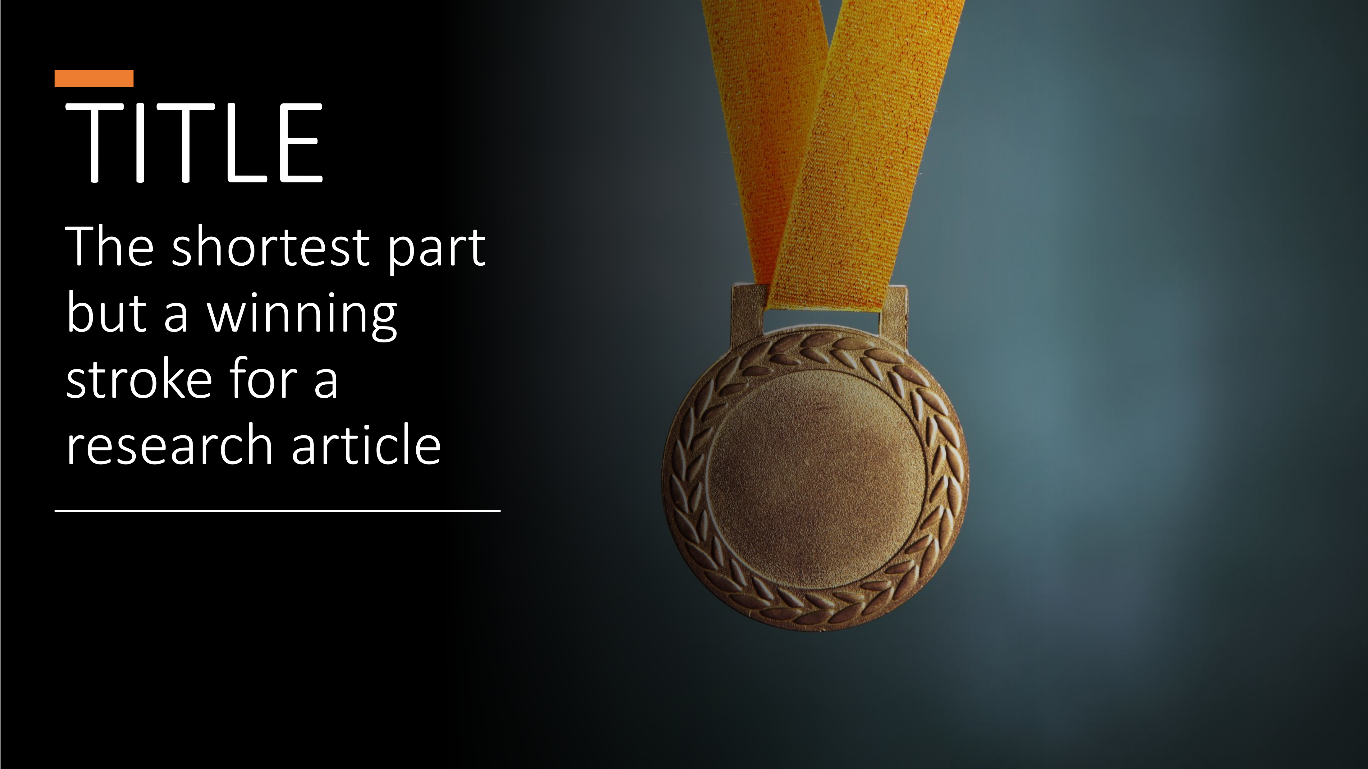Tips for writing a quality research paper
Category:
For authors
Date of publications:
21.11.2024
Views:
116

Today, more than 50,000 of the most important peer-reviewed journals publish a new scientific paper every few seconds; hundreds of thousands of papers reach editors and reviewers around the world each year, and 50% of all submissions are rejected at some stage. So how can you best prepare your manuscript for submission and increase its chances for acceptance?
Competition in scientific publishing is high, and the people who decide the fate of your manuscript have little time and a lot of work to do. But there are ways to make their lives a little easier and increase your chances of publication.
First, you need to make sure that the research is ready for publication.
A well-written research paper with academic value can be a key to the scientific community. However, if you are still not sure that the research is fully ready for publication, here are some key questions to ask yourself depending on your field of study:
1. Determine what type of paper best suits your work and the goal you want to achieve.
Here are the main types: Original Research, Review Article, Short report or Letter, Case Studies, Methodologies. You can read more about each type of research article in our article "Types of Research Articles and Their Features".
2. Choose the appropriate journal for your research.
Submit to journals that you already read and are familiar with. In this case, you will better understand its peculiarities, requirements of editors and reviewers. You should also consider:
Each element of the article has its own purpose, so you should make these sections easy to index and search.
Do not forget that the requirements may vary greatly from one publication to another, so always apply special instructions or guidelines for journal authors to your manuscript, even to the first draft (text arrangement, citation of the article, nomenclature, figures and tables, etc.) This will save time for both you and the editor. After all, often editors will not even consider an article if the requirements specified on the journal's website have not been applied by the author.
Also, even in the age of online publishing, time is still in short supply, so try to be as concise as possible. As journalists say, "Never use three words when one is enough!".
Let's look at the typical structure of a full research article (IMRAD's most common structure), but don't forget that some disciplines may have their own requirements, so check the instructions for authors on the journal's home page.
Title;
Abstract;
Key words;
Introduction;
Methods;
Results;
Discussion;
Conclusion;
Acknowledgments;
References.
You can read more about each section in our article "Structure of a scientific paper:basic rules and tips".
4. Decide the author's order.
In science, the most common way of ordering the names of Authors is by their contribution to the study. Typically, the first author conducts and/or supervises the data analysis and the correct presentation and interpretation of the results, drafts the article, and usually submits it to the journal as a corresponding author.
Co-authors contribute intellectually to the data analysis and participate in the interpretation of the data. They check each draft of the manuscript. They should all be able to present the paper and its results, as well as defend the findings and discuss the limitations of the study.
Do not give authors who should be included and do not provide "gift co-authorship," that is, authors who have not contributed substantially to the paper.
5. Check and double-check.
As a final step before submission, ask colleagues to read your paper and provide constructive feedback.
Make sure the paper is suitable for the chosen journal - take one last look at its aims and scope. Check that all the requirements specified in the guidelines for authors, including the layout of the article, have been met.
Make sure that all literature cited is listed and all references are available. Are the aims, objectives and significance of the results clear?
Do a final language check, either with a native English speaker or an editing service.
6. Submit the manuscript to the journal.
When you and your co-authors have made a final check of the manuscript, then you can submit it by email or through the journal's online submission system. Include a cover letter with your manuscript, stating the reasons why your article might be of interest to the editors, and make sure you have received approval from all authors to submit.
It is now up to the editors and reviewers to review the manuscript and give you their comments and feedback.
If the paper is rejected, don't despair - it happens to almost everyone, papers are rarely accepted on the first try. If the journal suggests major or minor changes, take the chance to provide a detailed response and make improvements.
We wish you success in writing your scientific manuscript!
Competition in scientific publishing is high, and the people who decide the fate of your manuscript have little time and a lot of work to do. But there are ways to make their lives a little easier and increase your chances of publication.
First, you need to make sure that the research is ready for publication.
A well-written research paper with academic value can be a key to the scientific community. However, if you are still not sure that the research is fully ready for publication, here are some key questions to ask yourself depending on your field of study:
- Is the research new and interesting? Is it unique?
- Is the work directly relevant to the current topic?
- Have recent findings or research in the field been verified?
- Are solutions to the problems proposed?
- Have the results been verified?
- Have appropriate controls been carried out, if necessary?
- Are the conclusions comprehensive?
1. Determine what type of paper best suits your work and the goal you want to achieve.
Here are the main types: Original Research, Review Article, Short report or Letter, Case Studies, Methodologies. You can read more about each type of research article in our article "Types of Research Articles and Their Features".
2. Choose the appropriate journal for your research.
Submit to journals that you already read and are familiar with. In this case, you will better understand its peculiarities, requirements of editors and reviewers. You should also consider:
- the specific subject area;
- the aims and scope of the journal;
- the type of your manuscript;
- the reputation of the journal;
- the composition of the editorial board and editorial council;
- the timeline for review and release of the journal;
- coverage and distribution;
- indexing in scientific databases;
- access ( Open or Closed).
Each element of the article has its own purpose, so you should make these sections easy to index and search.
Do not forget that the requirements may vary greatly from one publication to another, so always apply special instructions or guidelines for journal authors to your manuscript, even to the first draft (text arrangement, citation of the article, nomenclature, figures and tables, etc.) This will save time for both you and the editor. After all, often editors will not even consider an article if the requirements specified on the journal's website have not been applied by the author.
Also, even in the age of online publishing, time is still in short supply, so try to be as concise as possible. As journalists say, "Never use three words when one is enough!".
Let's look at the typical structure of a full research article (IMRAD's most common structure), but don't forget that some disciplines may have their own requirements, so check the instructions for authors on the journal's home page.
Title;
Abstract;
Key words;
Introduction;
Methods;
Results;
Discussion;
Conclusion;
Acknowledgments;
References.
You can read more about each section in our article "Structure of a scientific paper:basic rules and tips".
4. Decide the author's order.
In science, the most common way of ordering the names of Authors is by their contribution to the study. Typically, the first author conducts and/or supervises the data analysis and the correct presentation and interpretation of the results, drafts the article, and usually submits it to the journal as a corresponding author.
Co-authors contribute intellectually to the data analysis and participate in the interpretation of the data. They check each draft of the manuscript. They should all be able to present the paper and its results, as well as defend the findings and discuss the limitations of the study.
Do not give authors who should be included and do not provide "gift co-authorship," that is, authors who have not contributed substantially to the paper.
5. Check and double-check.
As a final step before submission, ask colleagues to read your paper and provide constructive feedback.
Make sure the paper is suitable for the chosen journal - take one last look at its aims and scope. Check that all the requirements specified in the guidelines for authors, including the layout of the article, have been met.
Make sure that all literature cited is listed and all references are available. Are the aims, objectives and significance of the results clear?
Do a final language check, either with a native English speaker or an editing service.
6. Submit the manuscript to the journal.
When you and your co-authors have made a final check of the manuscript, then you can submit it by email or through the journal's online submission system. Include a cover letter with your manuscript, stating the reasons why your article might be of interest to the editors, and make sure you have received approval from all authors to submit.
It is now up to the editors and reviewers to review the manuscript and give you their comments and feedback.
If the paper is rejected, don't despair - it happens to almost everyone, papers are rarely accepted on the first try. If the journal suggests major or minor changes, take the chance to provide a detailed response and make improvements.
We wish you success in writing your scientific manuscript!
Share post
Related publications

Structure of a research paper: Title and Authors
The title is the first thing readers look at. When searching for the right article, readers look in the following order: "Title" - "Abstract" - "Resul...

Structure of a scientific paper: basic rules and t...
Most international journals recommend using the IMRAD format for scientific papers. This term consists of the first letters of the English words: Intr...

